Sealife guideThe silky sharkCarcharhinus falciformis
Last updated on 09/09/2024 at 12:39 PM
Taxonomy
- Common name: Silky shark
- French name: Requin soyeux
- Spanish name: Tiburón piloto,tiburón lustroso,jaquetón sedoso
- Scientific name: Carcharhinus falciformis (Müller & Henle, 1839)
- Family name: Carcharhinidae
- Order name: Carcharhiniformes
- Class name: Elasmobranchii
Description
The silky shark (Carcharhinus falciformis) is a pelagic shark species with a very slender body and a pointed snout. Bronze in color with bluish-gray reflections, the silky shark averages about 10 feet in length.
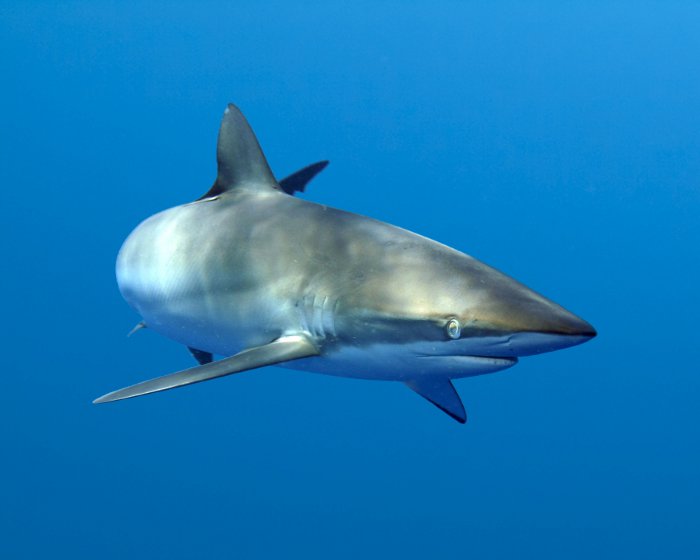
The silky shark (Carcharhinus falciformis) © Alex Chernikh CC BY 2.5 modifié par auxBulles.com
Geographic range
The silky shark is a migratory species widely distributed around the world in the warm tropical waters of seas and oceans. It can be found near the reefs of French Polynesia including the Society islands, the Tuamotu archipelago, the Gambiers, the Marquesas and the Australs.
Habitat
Silky sharks are generally found from the surface down to about 165 feet but they also venture as deep as 1,640 feet. This pelagic shark inhabits open ocean waters but can also be found near coasts with deep waters nearby.
Diet
The silky shark primarily feeds on pelagic fish like tuna, jacks as well as rays and cephalopods.
Reproduction
Silky sharks are viviparous with females giving birth to up to ten baby sharks after a one-year gestation period.
Did you know ?
The silky shark is listed as many other marine species within The IUCN Red List of threatened species. The silky shark appears in the IUCN Red List since 2021 within the category Vulnerable !
Tips for observing
Active both day and night, the silky shark is bold and curious, often approaching divers with great interest. So keep your eyes open, stay calm and always prioritize safety !
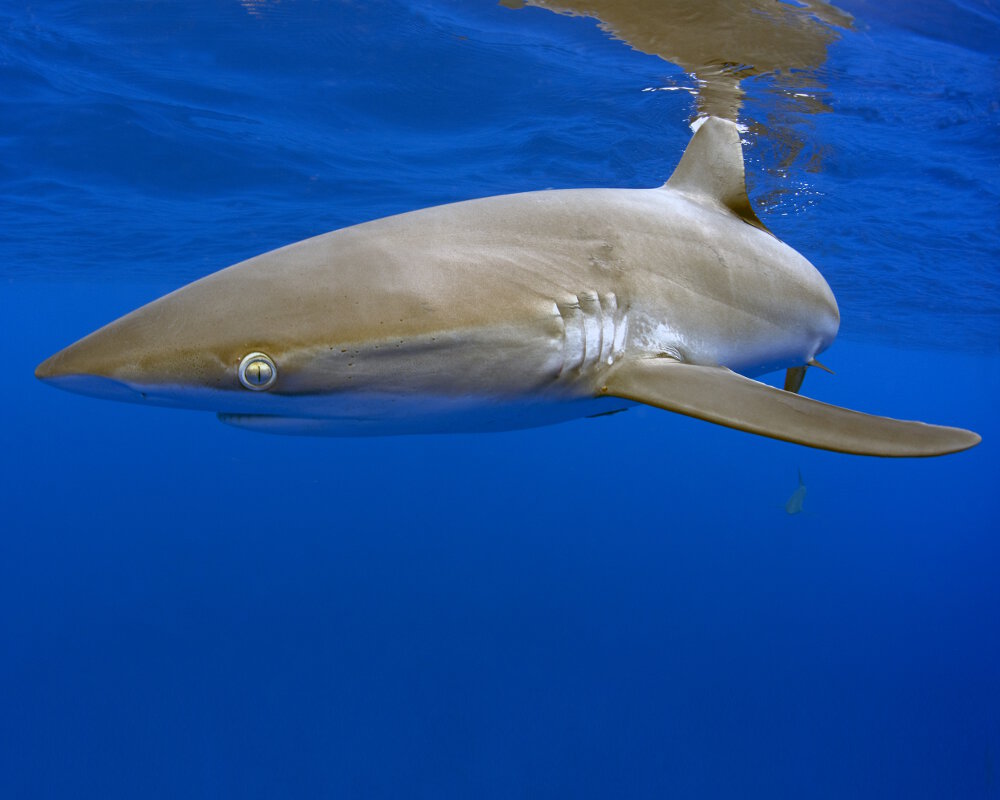
The silky shark has a very slender body and a pointed snout © Jonathan Green | Dreamstime.com
Within the same genus

Blacktip reef shark
(Carcharhinus melanopterus)
(Carcharhinus melanopterus)

Blacktip shark
(Carcharhinus limbatus)
(Carcharhinus limbatus)
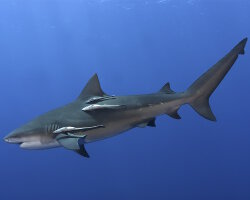
Bull shark
(Carcharhinus leucas)
(Carcharhinus leucas)
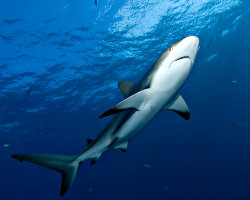
Caribbean reef shark
(Carcharhinus perezi)
(Carcharhinus perezi)

Copper shark
(Carcharhinus brachyurus)
(Carcharhinus brachyurus)

Galapagos shark
(Carcharhinus galapagensis)
(Carcharhinus galapagensis)

Sandbar shark
(Carcharhinus plumbeus)
(Carcharhinus plumbeus)
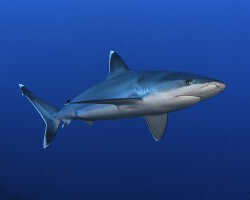
Silvertip shark
(Carcharhinus albimarginatus)
(Carcharhinus albimarginatus)
Within the same family

Blue shark
(Prionace glauca)
(Prionace glauca)
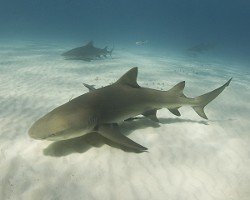
Lemon shark
(Negaprion brevirostris)
(Negaprion brevirostris)
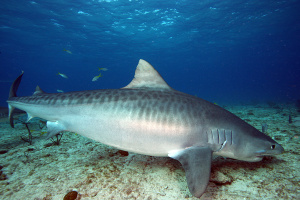
Tiger shark
(Galeocerdo cuvier)
(Galeocerdo cuvier)
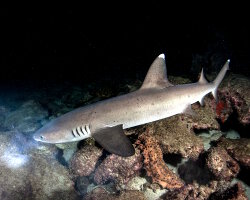
Whitetip reef shark
(Triaenodon obesus)
(Triaenodon obesus)
Discover also
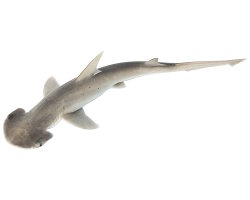
Bonnethead shark
(Sphyrna tiburo)
(Sphyrna tiburo)

Brownbanded bamboo shark
(Chiloscyllium punctatum)
(Chiloscyllium punctatum)

Hammerhead shark
(9 espèces)
(9 espèces)
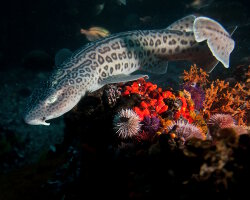
Leopard catshark
(Poroderma pantherinum)
(Poroderma pantherinum)
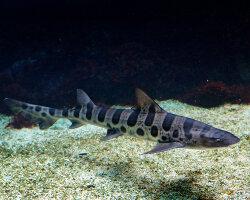
Leopard shark
(Triakis semifasciata)
(Triakis semifasciata)

Scalloped hammerhead
(Sphyrna lewini)
(Sphyrna lewini)
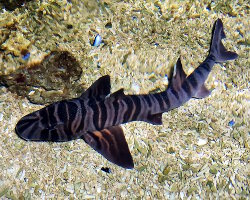
Zebra bullhead shark
(Heterodontus zebra)
(Heterodontus zebra)

Zebra shark
(Stegostoma fasciatum)
(Stegostoma fasciatum)
Our latestUpdates

Friday, December 12th 2025
Christmas magic at Disney hotels
Experience the magic of Christmas at Disney hotels: enchanting decorations, giant Christmas trees, dazzling lights and a festive holiday atmosphere.

Friday, November 28th 2025
Disney Hollywood Studios, from Star Wars to Toy Story
Dive into the magical world of Disney's Hollywood Studios: Star Wars and Toy Story attractions and shows for the whole family.

Wednesday, November 19th 2025
Tenerife island
Tenerife, the largest of the Canary islands, is a volcanic gem in the Atlantic ocean. It boasts an incredible variety of landscapes, from golden or black sand beaches to the subtropical forests of the Anaga mountains and the majestic Teide volcano, Spain's highest peak. With its picturesque villages, rich local culture and countless outdoor activities, Tenerife is a perfect destination for every type of traveler.
Photo of the Day
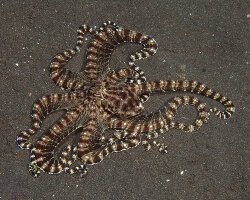
Pieuvre mimétique
(Thaumoctopus mimicus)
(Thaumoctopus mimicus)
